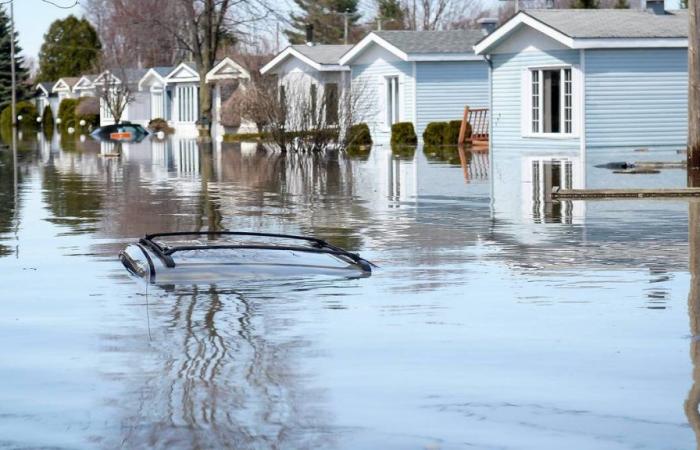The number of properties at risk of flooding could double in the greater Montreal area, according to new preliminary maps of flood zones made public Monday.
Nearly 20,000 homes are now at risk of flooding, we can see on these maps produced by the Metropolitan Community of Montreal (CMM) as part of public consultations aimed at modernizing the regulatory framework for flood zones.
This represents approximately $9.9 billion in value on the property assessment roll.
Certain regions have seen their flood zones particularly expand, such as Pierrefonds and Vaudreuil-Dorion. In Laval, the number of affected residences would even increase from 1,100 to 2,500.
These increases are notably caused by the addition of water data from 2017, 2019 and 2023, years where significant spring floods were recorded.
The Quebec government also requested that an increase factor be added “to take into account the uncertainty linked to climate change,” explains Nicolas Millot, director of transition and innovation at the CMM.
Owners whose residence is now in a flood zone will, however, retain an acquired right to their property, according to the regulation proposed by Quebec.
“However, we find that the rules are not flexible enough to transform the built environment. If an owner wishes to deconstruct his house to rebuild it in a more resilient way, this is only possible in weak areas. [risque] », underlines Mr. Millot.
Dams targeted
And due to the risks of failure of the various flood protection structures (OPI), particularly dikes, entire municipalities will find themselves in flood zones for the first time.
This is particularly the case of Sainte-Marthe-sur-le-Lac, whose dike which gave way in 2019 has since been rebuilt.
A resident of Sainte-Marthe-sur-le-Lac had to travel by kayak on April 30, 2019 following flooding caused by a broken dike.
Photo d’archives, Martin Alarie
“Currently, we only have two properties in a flood zone. And there, we will find ourselves with nearly 2,000 residences,” illustrates the mayor of the City, François Robillard.
If the new dike is recognized by Quebec as effective, the risk of flooding could decrease to a low level.
“There are still plenty of parameters that regulate renovation and they are the same for a city protected by an OPI or not,” underlines the mayor of the municipality located on the outskirts of Lac des Deux-Montagnes, whose citizens were “stunned” at the sight of these new cards.
The municipality and the CMM therefore believe that the risks linked to dikes should be distinguished from those linked to river overflows.
“We want to create a new area protected by a protective structure, with a risk measurement plan specific to the territorial reality,” mentions François Robillard.
The City of Sainte-Marthe-sur-le-Lac must submit a brief on this subject, accompanied by a citizens’ petition, before the end of public consultations on October 17.
The regulatory changes currently being studied by Quebec would slow down construction in these areas.






